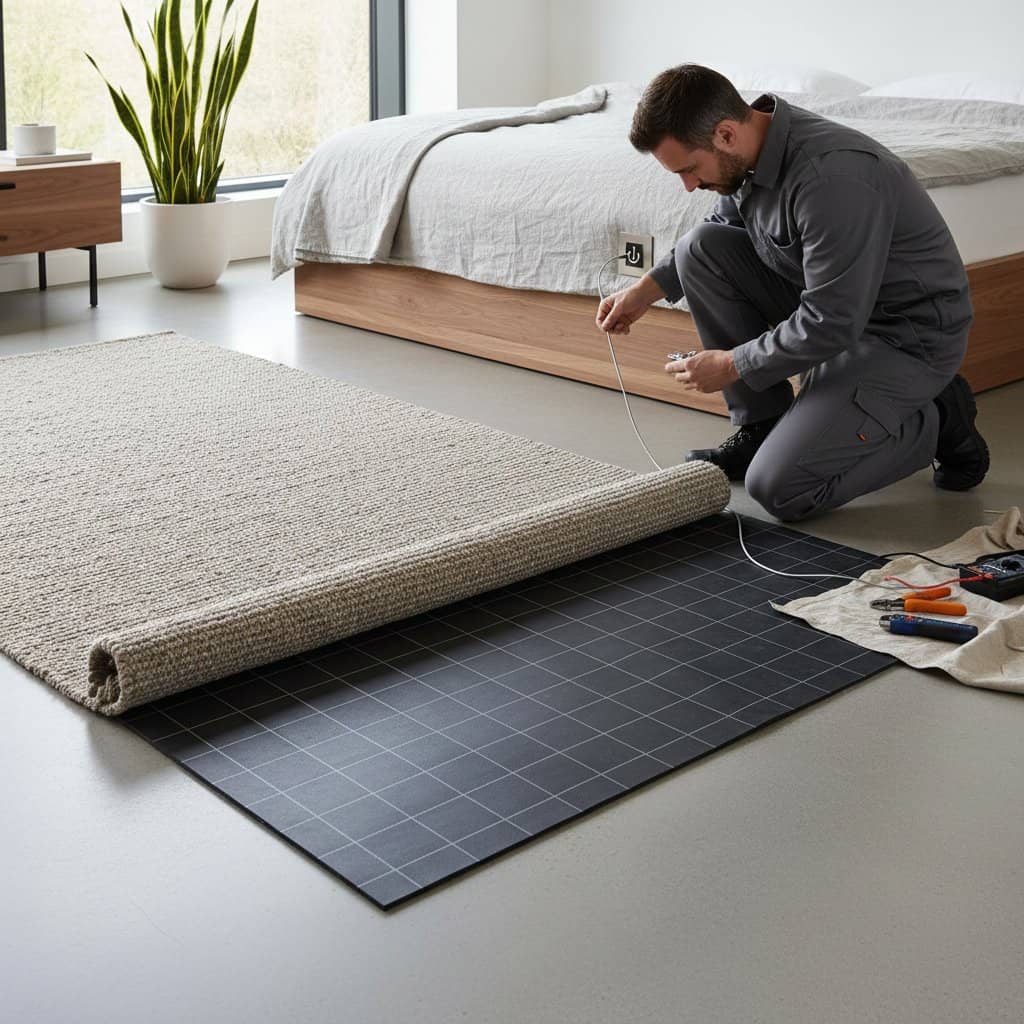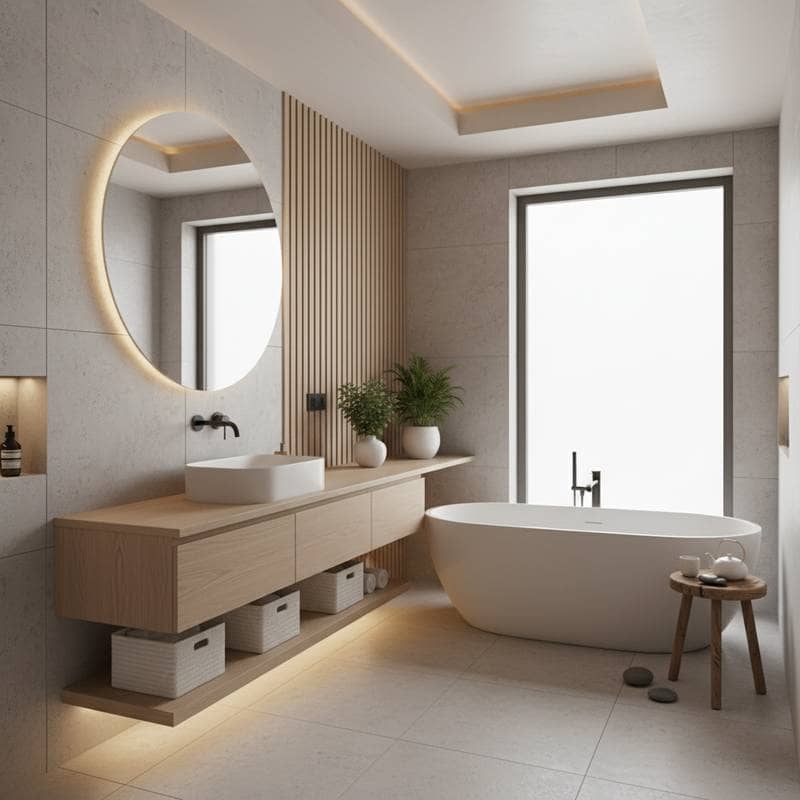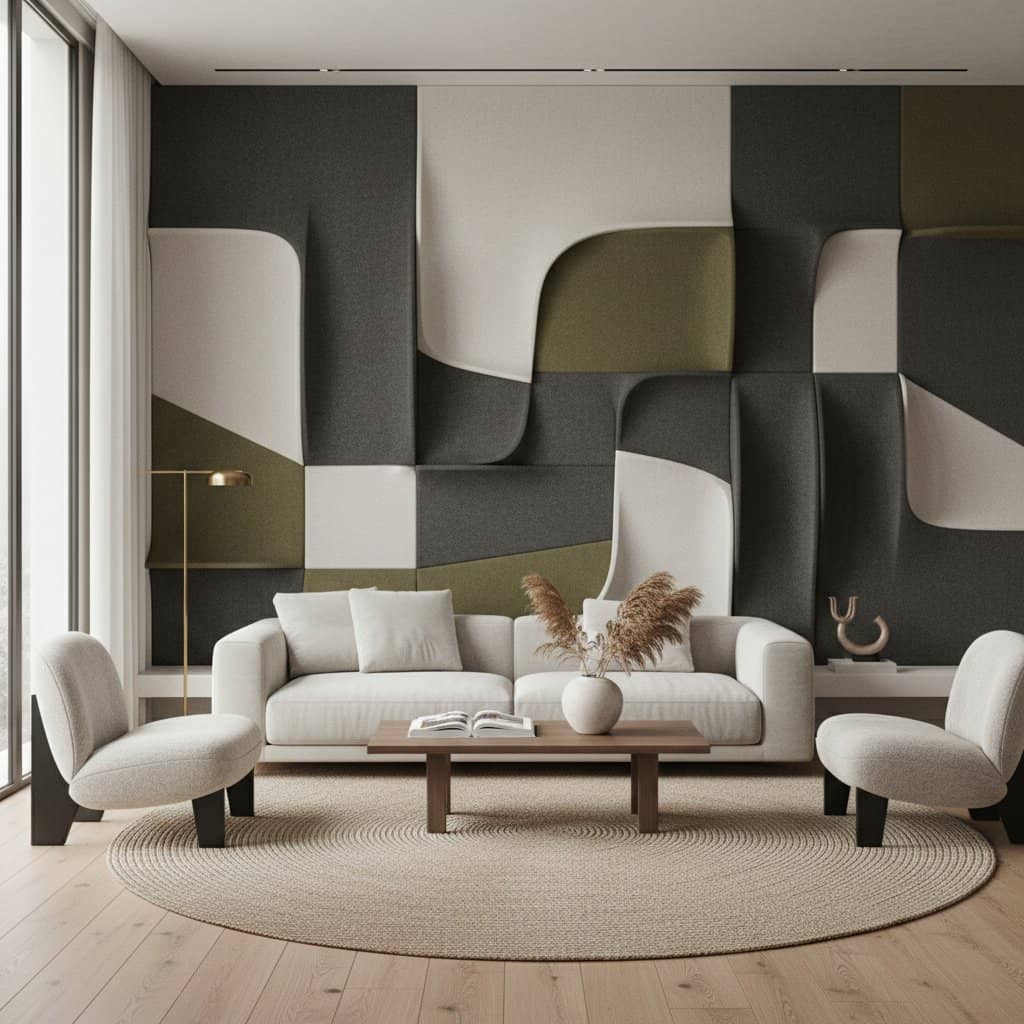Acoustic Panels as Art: Quiet Style for Living Rooms
A calm living room is one where sound feels balanced, conversation flows easily, and echoes fade before they distract. For many homes with open layouts or hard surfaces, that balance proves difficult to achieve. Acoustic panels, once reserved for studios or theaters, are now reimagined as design statements that soften noise while adding visual texture. They no longer need to look technical or hidden. With the right materials and thoughtful placement, they become wall art that improves both comfort and style.
Why Sound Control Belongs in Living Rooms
Hard floors, tall ceilings, and large windows create bright, airy spaces but also amplify sound. When every footstep or clink carries, it can make even a beautiful room feel harsh. Interior designer Kelly Duarte notes, "People notice poor acoustics more than they expect. They think the space feels cold or busy, but it is often the sound bouncing around."
Acoustic panels absorb that excess reverberation, making voices clearer and background noise less intrusive. In living rooms, this means smoother conversations, better music clarity, and a more relaxed atmosphere. The new generation of panels offers design flexibility, ranging from sculptural felt tiles to printed fabric canvases.
At a Glance
Who lives here: Families and professionals seeking quieter, more comfortable living areas
Location: Urban apartments and suburban homes with open-plan layouts
Average size: 250 to 400 square feet (23 to 37 square meters)
Design teams: Acoustic and interior designers collaborating to merge sound performance with visual appeal
Before
Traditional living room designs often ignored how sound travels. Large sectional sofas, glass coffee tables, and minimal rugs left few soft materials to absorb noise. In many cases, homeowners tried adding curtains or plush cushions, but these helped only slightly. The result was a room that looked finished yet sounded hollow.
Homeowner Maya Lin described her challenge: "We loved our living room's open feel, but watching a movie was frustrating. The sound echoed off every surface. We did not want foam panels that screamed 'recording studio.'"
This sentiment is common among homeowners who value aesthetics as much as comfort. The need is for acoustic solutions that blend in or, even better, enhance the visual story of the room.
After
The new approach treats acoustic panels as part of the art. Designers now integrate them into gallery walls, ceiling installations, and even custom cabinetry fronts. In Maya's case, her design team created a feature wall of square felt panels in soft gray and muted terracotta, arranged like oversized pixels. The panels absorb mid and high frequencies while serving as a focal point behind the sofa.
Designer Stephen Cho explained, "We treated sound like another material. The panels needed to perform, but they also needed to feel intentional." The result was a space where conversation feels natural and the television no longer dominates the soundscape.
Lighting completes the effect. Directional sconces highlight the texture of the panels, creating subtle shadows that change throughout the day. The room feels layered and calm, both visually and acoustically.
Design Details
- Materials: Wool felt, recycled PET fiber, or acoustic foam wrapped in fabric. Felt panels are popular for their soft texture and sustainable content.
- Sizes: Standard panels measure 24 by 24 inches (61 by 61 centimeters), though custom options allow for geometric layouts or full-wall coverage.
- Mounting: Adhesive strips or concealed clips make installation clean and reversible, ideal for renters.
- Finishes: Fabric-wrapped panels can be printed with abstract patterns, gradients, or even family photographs for a personal touch.
- Complementary elements: Area rugs, upholstered furniture, and drapery help distribute sound absorption across the space.
By pairing panels with other soft materials, designers can achieve balanced acoustic performance without over-treatment. The goal is not silence, but a comfortable, controlled sound field that supports daily living.
Different Styles, Same Purpose
Sculptural Panels
These panels use three-dimensional forms to catch and diffuse sound waves. Brands now offer hexagonal or curved modules that fit together like puzzle pieces. When grouped, they create a low-relief artwork that can fill a blank wall. Soft neutrals keep them subtle, while bold colors turn them into a statement.
Fabric Art Panels
Printed acoustic panels double as framed art. They use dense cores wrapped in acoustically transparent fabric, allowing full sound absorption without visible technical layers. Designers often use these over fireplaces or behind media units where wall space is limited.
Wood Slat Systems
For those who prefer natural finishes, wood slats backed with acoustic felt combine warmth and performance. The wood adds rhythm to the walls while the felt hidden behind absorbs reflected sound. It is a favorite for Scandinavian or mid-century interiors.
Ceiling Clouds
If wall space is limited, ceiling panels can float above seating zones. These absorb sound from multiple directions and create a cozy canopy effect. They work especially well in open-plan living-dining areas where conversation zones overlap.
Key Takeaways
- Balance function and form. Treat acoustic panels as decorative features rather than technical fixes.
- Plan placement. Focus on walls opposite sound sources or areas with noticeable echo.
- Layer softly. Combine panels with rugs, curtains, and upholstered furniture for consistent absorption.
- Use lighting. Highlight panel texture with gentle wall washers or concealed LED strips.
- Customize. Choose colors and shapes that echo your furniture lines or art palette.
These strategies keep the focus on livability while transforming how a space feels and sounds.
Living with Your Design
The most successful acoustic installations disappear into daily life. You notice the comfort before you notice the product. Even small interventions can make a difference. A single panel behind a reading chair can reduce echo from nearby windows. A larger grid above a sofa can anchor the seating area both visually and acoustically.
Homeowner Maya Lin said, "Now the room feels softer. We talk without raising our voices, and the TV does not overwhelm the space. Guests comment on how calm it feels." The tactile panels also invite touch, adding sensory depth to the room.
Over time, acoustic panels need little maintenance beyond dusting or light vacuuming. Their durability comes from dense felt or woven fabric that resists fading and wear.
Making It Happen
For anyone considering acoustic panels, start by identifying the noisiest surfaces. Clap your hands and listen for echo. Hard walls, ceilings, and exposed corners usually cause the strongest reflections.
- For subtlety: Choose panels in the same tone as the wall paint, perhaps arranged in a quiet geometric pattern.
- For expression: Select contrasting colors or printed designs that read as artwork.
- For flexibility: Modular systems let you expand coverage over time as your needs change.
Acoustic panels transform sound, but they also change how a room feels to live in. When design and function meet, the result is a living room that invites conversation, music, and calm.



